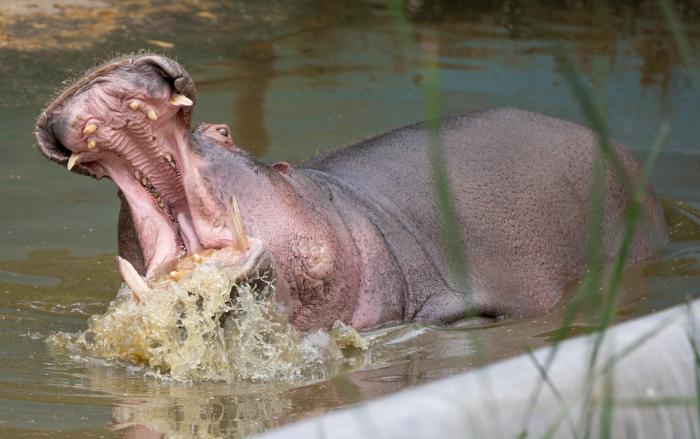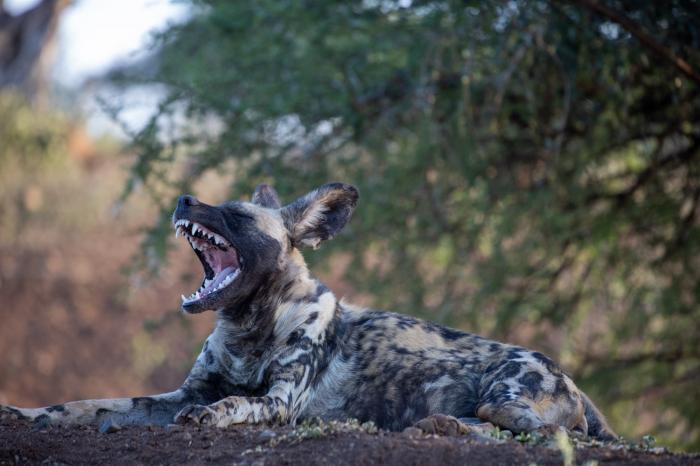From Grazers to Predators: The Diversity of Teeth in the Wild
» Deer stories » Other Animals » From Grazers to Predators: The Diversity of Teeth in the WildIn the wild, teeth are not merely tools for chewing; they are the key to understanding the dietary preferences, adaptations, and survival strategies of the creatures that roam our planet. From the gentle grazers that shape landscapes to the fierce predators ruling the food chain, dental diversity is nature's answer to a multitude of ecological challenges.
Animals have three primary dietary categories: herbivores, which exclusively consume plants, carnivores, which solely eat meat, and omnivores, which have a mixed diet of both plants and meat.
Herbivores
Mighty Molars of Herbivores: Herbivores are nature's gardeners, sculpting ecosystems through their selective diets. Large herbivores like cows, elk, and buffalo sport massive grinding molars, perfectly adapted for processing tough plant materials such as grasses, tree bark, and shrubs. Medium-sized herbivores like sheep and goats graze on shrubby vegetation and grasses. Small herbivores, including rabbits, chipmunks, squirrels, and mice, feed on grass, shrubs, seeds, and nuts. Their diverse dental adaptations enable them to extract nutrients from a wide range of plant sources.

Photo by Anil Sharma
Digestive Wonders: Herbivores often have specialized digestive systems to break down cellulose and extract nutrients efficiently from plant matter. Additionally, their teeth feature unique designs to rip off plants and grind them up with flat molars, ensuring they maximize their nutritional intake.
Omnivores
The Omnivore's Advantage: Omnivores possess the most diverse diets in the wild. They can adapt to the food that is most plentiful, switching between plants and meat as needed. This adaptability makes them integral components of many ecosystems. Large omnivores like bears and humans, medium-sized ones like raccoons and pigs, and small ones like certain fish and insects, all have versatile dental adaptations.

Limitations of Omnivores: Despite their adaptability, omnivores do have dietary limitations. They usually cannot consume all types of plants, particularly grasses and certain grains, due to digestive constraints. However, they can compensate by including fruits, vegetables, insects, and meat in their diets.
Carnivores
Predatory Arsenal: Carnivores, as apex predators, are essential for controlling prey populations. Large carnivores like wolves and mountain lions rely on their sharp teeth, jaws, and claws to hunt down large herbivores such as elk and deer. Medium-sized carnivores like hawks and snakes prey on smaller animals like rodents, birds, and insects. Smaller carnivores, such as specific birds and toads, target insects and worms with their sharp beaks and teeth.

Photo by Matt Burke
The Balance of Ecosystems: Carnivores, by preying on herbivores and other carnivores, help maintain the balance of ecosystems. The presence of carnivores is vital to controlling the populations of various animals and ensuring that no single species overruns the ecosystem.
Dental Insights
The dental diversity among grazers, omnivores, and predators in the wild is not only a testament to nature's ingenuity but also a critical component of ecological balance. Understanding the significance of these dental adaptations plays a vital role in conservation efforts. Monitoring changes in dental structures can offer early warnings of threats like habitat loss or overhunting, allowing us to protect the delicate web of life on our planet.
In conclusion, from the grinding molars of herbivores to the tearing teeth of carnivores and the adaptability of omnivores, the diversity of teeth in the wild is a testament to the beauty and complexity of nature. These dental insights enrich our understanding of how animals thrive in their respective niches and highlight the interconnectedness of all species within our ecosystems. By appreciating the significance of teeth in the wild, we gain a deeper appreciation for the remarkable tapestry of life on Earth.
Sources include: https://www.dentalone-md.com/locations/oxon-hill/carnivores-omnivores-and-herbivores-their-differences-and-roles-in-the-food-chain
Published 07 September 2023
More «Other Animals» stories
Herbivorous Animals: Deer vs. Its Closest Relatives, What Do They Eat?
Who are deers closest relatives and what do they eat? In this article, we'll delve into the world of herbivorous animals, focusing on the iconic deer and their dietary preferences in relation to their closest kin.
read more...
Playful Paws and Hooves: Do Herbivore Young Play Like Carnivores?
Nature's playground is filled with diverse and fascinating creatures, each exhibiting unique behaviors that captivate our attention. While we often associate playful antics with carnivores, the question arises: do herbivore young engage in play similar to their meat-eating counterparts? The answer may surprise you, as the world of herbivores reveals a playful side that challenges stereotypes.
read more...
Spit Happens! (What Animals Spit and Why)
If you thought spitting was just a human thing, think again! Animals are joining the slobber spectacle, and trust me, they've got quite the repertoire of spit-tastic moves. From llamas to camels, the animal kingdom is spewing surprise after surprise. So, buckle up and get ready for a wild ride through the fantastic and funny world of animal spit!
read more...
 '
'


